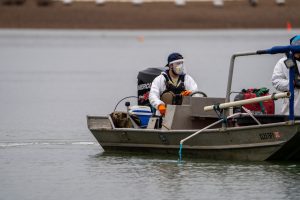Haims: Know how to reverse an overdose
The devastating effects of the opioid crisis have not spared our mountain communities.
Unfortunately, our state is at the higher end of the nation’s statistics for the average year-to-year increase in overdose mortality. According to the CDC, for the period of January 2021 to January 2022, Colorado had 1,933 counts of drug overdoses. Compared to the previous 12 months (1,557 deaths) this represented about a 20% increase.
Closer to home, between 2019 and 2020, our mountain communities have lost 38 lives to overdoses. Eagle County lost 11 people to overdoses, Garfield County lost 21, and Summit County lost six. Some of these lives lost may have been saved had people known about signs to look for and tools available to reverse an overdose.
It is not my sole purpose to reiterate the many devastating stories of lives lost that have besieged our nation and small mountain communities. Rather, it is with the intent that I educate those within our mountain communities that we have the ability to possibly save a life. On July 18, a community forum will be held at the Beaver Creek Chapel where we will learn about what an active overdose looks like and what tools are available to help reverse an overdose.
Although opioids remain quite high on the list of causes of overdose, tranquilizers, stimulants and alcohol also contribute significantly. Depending upon the substance(s) someone has taken, the symptoms of an overdose can vary. The ability to recognize the red flags of an ensuing issue and knowing what to do may save a life.

Support Local Journalism
Potential signs of an opioid or tranquilizer (benzodiazepine) overdose look different than that of a stimulant overdose or an overdose from alcohol. Although opioid and tranquilizer overdoses often share symptoms such as slowed, labored breathing, or respiratory arrest, there are differences. An opioid overdose may exhibit blue or purple lips and/or fingertips along with constricted pupils. An overdose caused by a tranquilizer such as Xanax, valium, or Klonopin often presents with drowsiness, extreme fatigue, physical weakness, and/or lack of coordination.
There is some help on the way. Colorado stands to receive over $400 million in proceeds from national opioid settlements. These funds will be distributed throughout the state for addiction treatment, recovery and prevention programs. The distribution of these proceeds for Eagle, Garfield, Pitkin Summit, and Lake counties (Region 5) is expected to be about $4,750,170.02 over 18 years with an initial distribution of $661,156.43 in the first year.
The community forum on July 18 is not only going to be a very educational event, but additionally, it will be an opportunity to receive free doses of Narcan, a medicine that can rapidly reverse an opioid overdose. Speakers from Eagle County Paramedics, Eagle Valley Behavioral Health, and Starting Hearts will provide invaluable education and even CPR training.
To ensure there is room for everyone, please make a reservation by emailing: info@startinghearts.org. If you would like more information, please call Starting Hearts at 970-763-5306 or B’nai Vail 970-477-2992.
Judson Haims is the owner of Visiting Angels Home Care in Eagle County. He is an advocate for our elderly and available to answer questions. His contact information is VisitingAngels.com/comtns and 970-328-5526.











